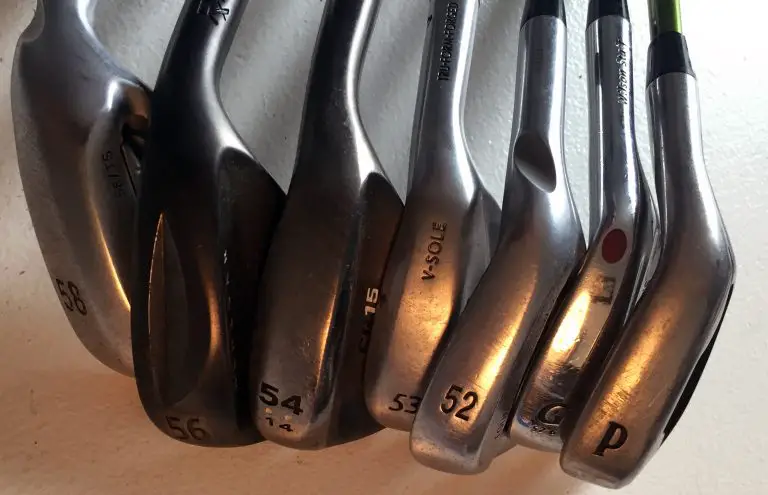Why Are Long Irons Hard To Hit

Are you struggling to hit long irons consistently and wondering why these clubs seem to pose such a challenge? You’re not alone. Many golfers find long irons difficult to hit effectively. In this guide, we will explore the reasons behind the difficulties encountered when using long irons in golf.
Long irons, typically numbered 2-4, have a longer shaft length and lower loft compared to other irons. These clubs require precise technique and a solid strike to achieve the desired distance and accuracy. However, their unique characteristics can make them challenging for even experienced golfers.
In this comprehensive guide, we will delve into the factors that contribute to the difficulty of hitting long irons. We will examine club design and technology, swing mechanics and technique, ball flight and shot shaping, and the challenges associated with consistent contact and achieving optimal distance.
By understanding these factors and the specific challenges posed by long irons, you can gain insights into how to improve your performance with these clubs. We will also discuss alternative club options and equipment considerations to help you find solutions that work for your game.
So, whether you’re a beginner struggling to master long irons or an experienced player looking to fine-tune your skills, this guide will provide you with valuable insights, tips, and strategies to overcome the hurdles and make long irons a valuable asset in your golf game. Let’s dive in and unlock the secrets to conquering long irons on the course!

Understanding Long Irons
Before delving into the difficulties, it’s essential to have a solid understanding of what long irons are and their intended use. Long irons are typically numbered 2-4 and are designed to hit the ball at longer distances. These clubs feature a longer shaft and lower loft, making them suitable for shots that require more carry and less trajectory.
In this section, we’ll explore the specific characteristics and specifications of long irons. We’ll discuss their intended use on the golf course, advantages in certain situations, and how they differ from other clubs in the bag.
Club Design and Technology
The design and technology incorporated into long irons significantly influence their playability and the challenges golfers face when using them. In this section, we’ll analyze the various design features of long irons, including clubhead size, loft, and center of gravity.
Understanding the impact of these design elements will shed light on the difficulties faced by golfers and the ways in which technology has evolved to address these challenges. We’ll also discuss the advancements in club technology and how they affect long iron performance.
Swing Mechanics and Technique
Proper swing mechanics and technique are crucial for successfully hitting long irons. In this section, we’ll explore the specific swing adjustments and techniques necessary to improve long iron play.
We’ll discuss differences in setup, posture, and ball position when using long irons, as well as the importance of swing speed, angle of attack, and tempo. Understanding these aspects and implementing the correct technique will contribute to more consistent and effective long iron shots.
Ball Flight and Shot Shaping
The ball flight and shot shaping capabilities of long irons play a significant role in their difficulty to hit. In this section, we’ll explore the unique characteristics of ball flight with long irons and the challenges golfers face in achieving the desired shot shape and trajectory.
We’ll discuss the influence of swing path, face angle, and impact location on ball flight, and provide tips and techniques to help you gain better control over your long iron shots.
Difficulty in Consistent Contact
Achieving solid contact with long irons is crucial for consistent performance. However, due to their smaller clubhead size and reduced forgiveness, golfers often struggle to make clean contact with the ball when using long irons.
In this section, we’ll analyze the challenges associated with consistent contact and explore common swing faults that lead to poor contact with long irons. We’ll also provide practical tips and drills to help you improve your ball-striking consistency.
Distance and Control Challenges
Long irons are often associated with challenges in achieving both distance and control. Finding the right balance between the two can be a struggle for many golfers.
In this section, we’ll discuss the difficulties golfers face in generating desired distance with long irons. We’ll explore the trade-off between distance and control and highlight the importance of proper technique and club selection for optimizing performance.
Alternatives and Equipment Considerations
For golfers who find long irons particularly challenging, there are alternative club options that can help bridge the gap. In this section, we’ll explore alternatives such as hybrid clubs and utility irons that offer more forgiveness and easier playability.
We’ll discuss the advantages of these club options and provide insights into club fitting and equipment considerations for long iron replacements. Finding the right club that suits your game can significantly improve your performance on the course.
Improving Performance with Long Irons
Now that we’ve discussed the difficulties and explored alternative options, it’s time to focus on improving your performance with long irons. In this section, we’ll provide practical tips, strategies, and drills to enhance your long iron play.
We’ll discuss practice techniques to develop consistency and confidence with long irons, as well as the benefits of seeking professional instruction and personalized coaching. With dedication and focused practice, you can overcome the challenges associated with long irons and unlock their potential in your game.
Conclusion
Long irons can be challenging clubs to hit effectively in golf due to their longer shaft length and lower loft. However, with a solid understanding of the factors that contribute to the difficulties and the implementation of proper techniques and strategies, you can improve your performance with long irons.
Throughout this guide, we have explored the reasons why long irons are hard to hit. We’ve discussed club design and technology, swing mechanics and technique, ball flight and shot shaping, and the challenges associated with consistent contact and achieving optimal distance. Additionally, we’ve provided insights into alternative club options and equipment considerations.
By incorporating the knowledge and techniques outlined in this guide into your practice routine, you can overcome the challenges and elevate your long iron play. Remember to focus on proper swing mechanics, adjust your setup and ball position accordingly, and explore alternative club options if necessary.
Improving your long iron game takes time, practice, and patience. Embrace the process and be open to experimenting with different techniques to find what works best for you. With dedication and persistence, you’ll gradually build confidence and see improvements in your long iron performance.
So, don’t let the difficulties discourage you. Embrace the challenge, apply the tips and strategies outlined in this guide, and soon you’ll be hitting long irons with confidence and precision. Keep practicing and enjoy the rewards that come with mastering these clubs on the golf course.





